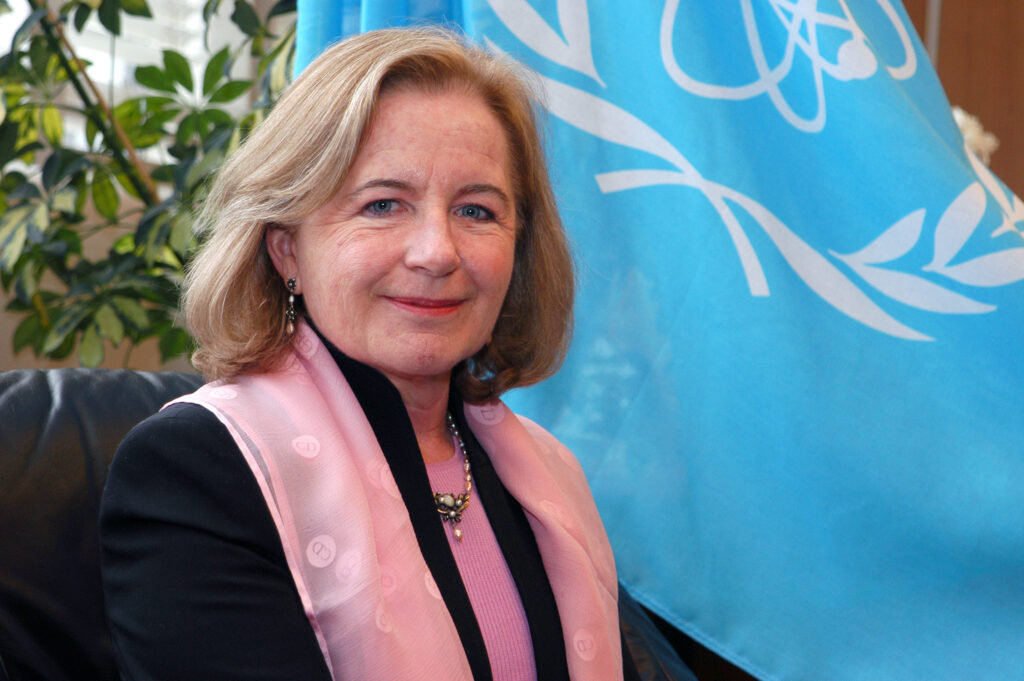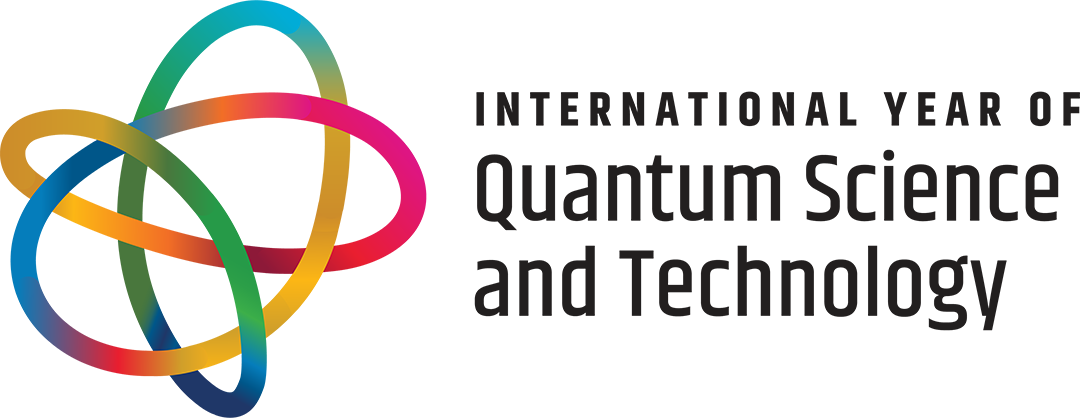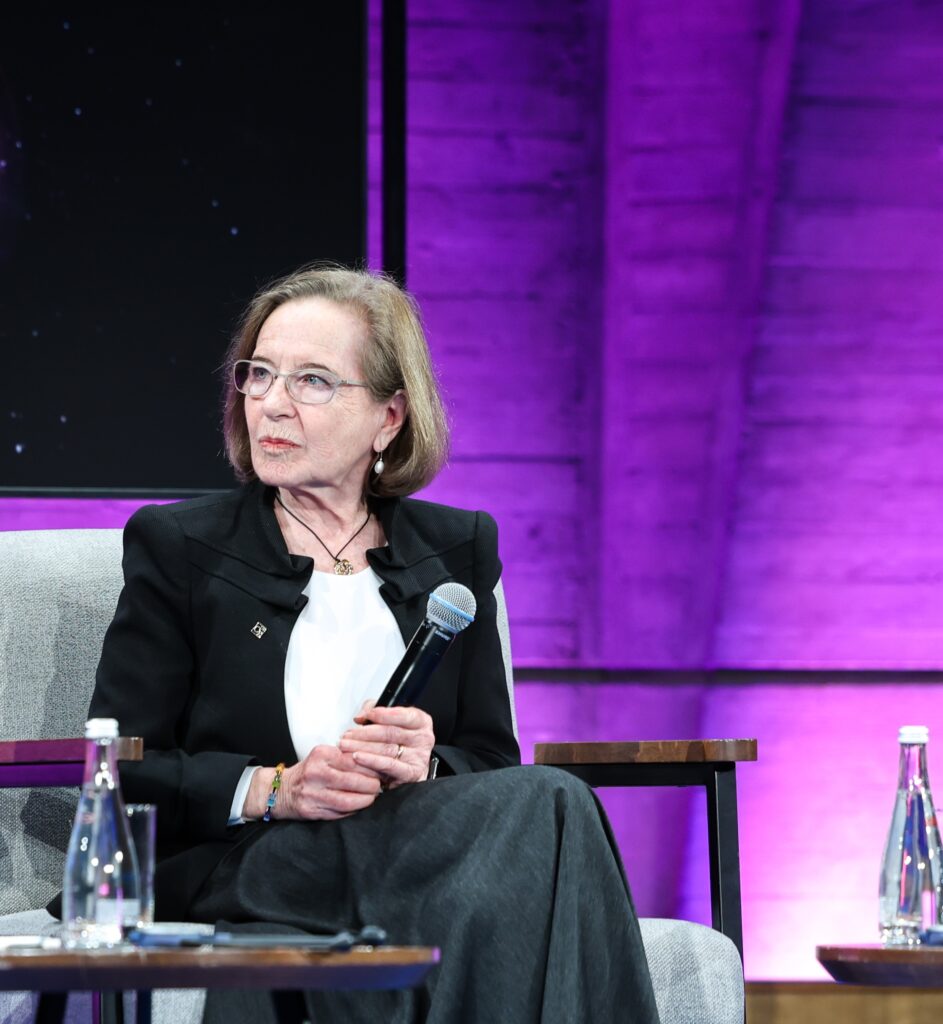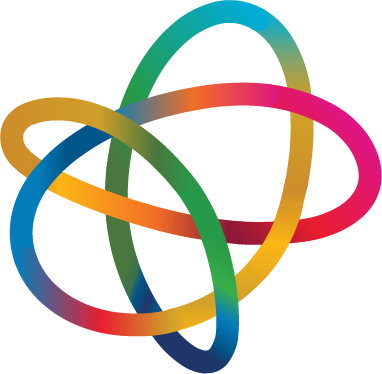A Life Dedicated to Quantum Science, Peace, Equity, and Universal Access to Knowledge
Interview with Dr. Ana María Cetto, Mexican physics professor and researcher, promoter of the International Year of Quantum Science and Technology, leader of two Nobel Peace Prize-winning organizations, and IYA’s Tate 2025 Medal.
Many scientists dedicate their entire lives to research and achieve great accomplishments. But to gather the merits that Ana María Cetto, professor and researcher at the National Autonomous University of Mexico, has accumulated would take several lifetimes. Her trajectory is so broad and deep that a few minutes of conversation with her are enough to leave us both impressed and inspired.
In addition to an outstanding scientific career researching the fundamentals of quantum mechanics, Ana María has worked tirelessly for peace, gender equity, and universal access to knowledge. Her understanding of science as an integral commitment to society, combined with her international leadership, has made her a voice admired and listened to around the world. It was precisely this spirit that led her to be one of the main driving forces behind the declaration of the International Year of Quantum Science and Technology (IYQ).
“We had the successful precedent of the International Year of Light, in 2015, in which a very, very small group of scientists got down to work and devoted a lot of time and effort, also diplomatic, and it was a fantastic experience,” Dr. Cetto explains enthusiastically. “The idea [of IYQ] arose within some scientific societies who took it to the International Union of Pure and Applied Physics, whose General Assembly in 2021 agreed to approve it; that is where we came in precisely because we had already collaborated with UNESCO, we had already traveled that road, we knew the process, the complexities, and the obstacles.
“So we began to work as a team, the embassy and the Mexican delegation to UNESCO to do their part, and when the initiative was submitted to the UNESCO General Conference, there was no discussion; it was approved by acclamation, by consensus. It was a joint effort and a good example of science diplomacy.“
In addition to the social, ethical, political, and technical impact, the initiative also responds to a deeply personal motivation: to promote a clearer and more accessible understanding of quantum phenomena, to combat the idea that it is an unintelligible or magical science, and to insist that, with the right approach, quantum mechanics can be taught, learned, and applied in a transformative way for societies.
“My motivation was twofold: to help get the initiative accepted for the common good, because there are countries where quantum science and technology are not being developed, there are many disparities, and this leads to technological dependence with all the consequences that this entails for our economies. I also want to promote people’s education and culture so that everyone has an idea of what quantum mechanics means. I am interested in showing that quantum mechanics can be understood, that it is not strange or impossible to explain. It can be explained and I would like to contribute to that, to a good understanding of physics and quantum mechanics.”
The complexities of driving a year that celebrates a fundamental science
Part of the interest in promoting the International Year of Quantum Science and Technology is to prepare governments, educational institutions, and industry for the challenges, bringing to the table the necessary ethical discussion about new technologies.
Despite limited resources and resistance from some industrialized countries reluctant to accept the cost and complexity of launching a new global scientific initiative, the commitment, coordination, and conviction of those involved allowed the proposal to be approved without the need for debate. In an outstanding effort of effective science diplomacy, a record 72 countries officially supported the IYQ proclamation.
“There was some confusion and even resistance. The richer countries, those with more resources and those with more technology, are usually the most resistant to another scientific year, arguing that it is too expensive. Finally, we managed to get everyone interested, because the business that quantum science produces today is appreciable in communications, microelectronics, devices for disease diagnosis, drug design… quantum science is everywhere, and the countries that invest the most in it are the ones that benefit the most [the IYQ]”.
A Mexican woman deserving of two Nobel Peace Prizes
Beyond her academic work, Cetto has been a strong advocate for peace and science diplomacy. Since her student years, she has been active in peace movements, and later joined the Pugwash Conferences on Science and World Affairs. This international non-governmental organization, which works to reduce armed conflict and promote global security, received the Nobel Peace Prize in 1995, while Cetto was on the Executive Committee. In 1997, she was elected president of the organization.
“The work at Pugwash was interesting and enriching, and I particularly got to bring a different voice: coming from a country that has been traditionally pacifist and was a pioneer in establishing nuclear-weapon-free zones. I have a fresh, distinct vision of approaching the search for peaceful ways to solutions.
During that experience, there were some very satisfying moments, but others were not so satisfying because there were conflicts that not only persisted but also escalated. The characteristic of Pugwash is that it has outstanding scientists, including Nobel Prize winners, former military and diplomats, and professionals who are very committed to disarmament and peaceful conflict resolution.
Now I have been invited to head a newly established advisory board, which for me means recognition of my 30-year involvement, but also a lot of commitment because of the critical situation we are going through. The important thing is to continue in the struggle.”
In 2003, Dr. Ana María Cetto took on a new challenge as Deputy Director General of the International Atomic Energy Agency (IAEA), a key institution for global security that, just two years later, was awarded the Nobel Peace Prize. By joining the agency, Dr. Cetto not only broke barriers by becoming the first woman – and the first Latin American – to hold that position, but also left a profound mark on crucial issues for the future of humanity.
In one of her most influential works within the IAEA, she addressed the different nuclear technologies and the diversity of their peaceful applications that bring enormous benefits, such as in medicine, agriculture, or energy production, but also pose increasingly serious risks due to their wider availability. Given this delicate balance, Dr. Cetto emphasized the urgent need to strengthen nuclear safety infrastructures, especially in a context of accelerating technological advances, geopolitical tensions, and renewed interest in nuclear energy.
“When, in 2002, IAEA Director General Mohamed ElBaradei invited me to join as Deputy Director General, I had to withdraw from Pugwash because of a potential conflict of interest. Thus began an eight-year stint in Vienna. There I headed the technical cooperation program in charge of peaceful applications of nuclear technologies. It was a very enriching experience, at a particularly good time for the Agency.“

The will to understand the fundamentals of quantum mechanics
Research into the fundamentals of quantum mechanics is an area that many scientists look at out of the corner of their eye; some dismiss it as mere philosophy. For many, all has already been said, and they consider that investigating the cause of quantum phenomena is a waste of time: after all, some argue, quantum mechanics works so well that it has already led to impressive technologies and promising ones, such as quantum computers.
But Ana María Cetto is not willing to abandon her intellectual curiosity for practicality. From a very young age she has always insisted on getting to the heart of the matter: understanding quantum phenomena from the physics itself, not just from the interpretations. As she says, it is not just a matter of making it work but of understanding why it works.
“When I was a student, quantum professors said things that I disagreed with, and that motivated me to look for another explanation. Quantum mechanics, as presented in textbooks, is a catalog of principles, akin to decrees, but all this can be explained rigorously by developing the necessary physics.
Since the first formalism of quantum mechanics was published, 100 years ago with Heisenberg’s work and a little later with Schrödinger’s, it has been very successful: it is a formalism that allows you to make very precise calculations and even to make predictions, but the founders at that time did not care about understanding the origin of quantum phenomena. At that time, they were very busy developing their algebra, and so that question was left on the back burner.”
Together with her small research group, Ana María Cetto takes up this forgotten question with a provocative proposal: to go beyond traditional interpretations and search for the underlying physics. Inspired by an early observation by Max Planck, who in 1911 explained that his work was incomplete, she and her team have developed an approach that explains quantum phenomena associated with dual wave-particle behavior, not as mysteries, but as the result of a concrete interaction between subatomic particles and the vacuum.
“In 1911, Max Planck explained that his formula was incomplete because one must also include a term that always exists, even when there is no external radiation. When there are no light bulbs on, a field known as “vacuum” remains, and it must exert some effect on the particles. Inspired by this, we set about doing physics, not interpretation, and we have been able to explain how the vacuum field imprints on the particles a certain wave-like behavior that is expressed in interference phenomena. Atoms are still particles hit by this playful field. Imagine a stone falling into a pond and forming a wave, and the stone is interacting with the waves, so that vacuum is interacting with the particles, and with that we explain quantum phenomena.”
Tate Medal: an award for rigorous research with a social and humanistic vision
Among a long list of well-deserved awards, Dr. Cetto received this year no less than the John Torrence Tate Medal, one of the highest awards given by the American Institute of Physics. An award reserved for those who have left their mark not only in scientific research, but also in the visibility and democratization of knowledge.
The distinction recognizes his exceptional career in quantum physics, but also celebrates his international leadership, his tireless struggle for equity and for a more inclusive science, more ethical and more connected to social realities, highlighting the creation of the Regional Online Information System for Scientific Journals in Latin America, the Caribbean, Spain and Portugal – Latindex, which today is a continental reference in editorial quality supported by a non-commercial network of partners in all countries of the region and has been key to transforming the landscape of access to knowledge in Spanish and Portuguese.
“A deep-rooted bias still persists in the international physics community. We, because we work in a country that is not considered “central” on the map of science, continue to be victims of that bias. And in some way, we have also been complicit, because instead of citing our own work or that of colleagues in the region, we end up prioritizing the work of other authors published in foreign journals.
In many spaces, it is still considered – not openly, but subliminally, tacitly – that those of us who do science from the South produce second-rate knowledge. And that is not only false, it is deeply unfair.
That is why in recent years I have devoted time and energy to the issue of access to scientific publications, to the recognition of journals that are produced outside the so-called mainstream, controlled by large commercial publishers that have turned this into a business. It has not been easy, I had to live it closely with the Mexican Journal of Physics. The evaluation systems did not recognize it, they did not take us into account. But that is beginning to change: in Mexico and in other countries, evaluation criteria are already being adjusted to value the editorial work done in our own communities.
Publishing in today’s leading journals can cost thousands of dollars per article. You not only have to pay to read, but also to publish. And that imposes yet another barrier. That’s why we fight for a fairer system that is accessible to all.
I was very pleased to learn the reasons why I am receiving the AIP Tate Medal: for my work for equity, for international leadership in physics, and for the creation of Latindex. I am also pleased to have had the opportunity to collaborate with all the colleagues with whom I have had the good fortune to work. The fact that the results of this teamwork are recognized as a valuable contribution really makes me happy.
Training as a scientist: a privilege that entails responsibilities
The road to leadership is sometimes traveled without maps, guided by curiosity, commitment, and a persistent question: what can I contribute from what I know? In the world of science, this question takes on a special dimension. Because doing research is not only a career of knowledge, but also an opportunity to transform realities.
Ana María Cetto’s transit as a leader in quantum physics, working not only for its understanding, but defining its role in society, definitely invites us to reflect, to look at science not only as an end, but as a means to generate social impact.
“There are no recipes for participating in activities that have a social impact. As one advances and grows in one’s scientific training, learning more and more, one also begins to understand that this possibility of learning and becoming a scientist is, in many ways, a privilege. That privilege comes with responsibilities. The tools provided by science should not only be used for personal or professional development, but also to contribute to the common good. Science is, after all, a human product that is built on the work of millions of people.”
Featured picture copyright: UNESCO/Marie ETCHEGOYEN.
For general questions about IYQ, please contact info@quantum2025.org. For press inquiries, contact iyq2025@hkamarcom.com.



